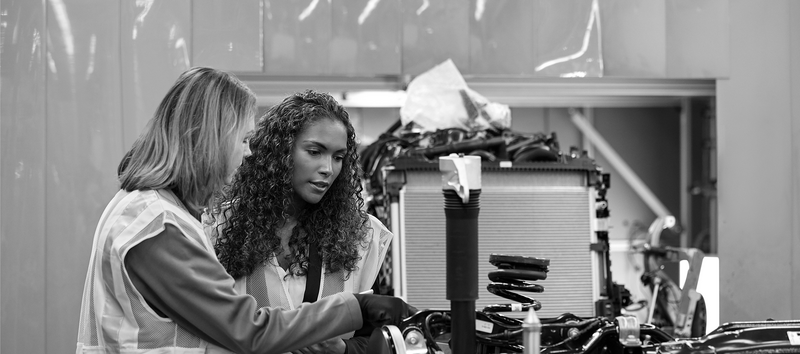What is PPAP and why is it important?
PPAP is a common acronym within manufacturing which stands for Production Part Approval Process. As a standard method that’s widely used, it’s important to understand what Production Part Approval Process (PPAP) is and why it’s important. Let’s look at a PPAP and break down the key elements of the process.
What is PPAP?
Production Part Approval Process (PPAP) is a key procedure within aerospace and automotive manufacturing to ensure that parts manufactured by suppliers are created consistently. It’s a comprehensive process which consists of 18 steps which ensure that each part is meets expectations and is produced to high quality each time. While PPAP originated in aerospace and automotive, it has been used more widely throughout manufacturing to support key activities and ease collaboration between suppliers and customers.
The process is also a part of APQP (Advanced Product Quality Planning) - specifically stage four which is the product and process validation stage. The full Production Part Approval Process (PPAP) guidelines themselves are published by and can be purchased from the Automotive Industry Action Group (AIAG).
The importance of production part approval process (PPAP)
In short, production part approval process (PPAP) is important because it ensures quality and minimizes the risk of corrective actions needed in the future. It is essential that each part that is needed for a vehicle or piece of machinery is made to the correct specifications each time, therefore PPAP lays out clear guidelines so that suppliers know exactly what is expected of them, improving the process of communication.
For the manufacturer, it enables quality output and assurance that their requirements are going to be met during the production run. It minimises the risk of things going wrong and corrective actions having to be implemented, making for a smoother overall process.
The full production part approval process (PPAP) process
There are 18 elements of PPAP, not all of these are always going to be necessary - it will depend on customer requirements and the complexity of the part being manufactured.
PPAP 18 elements:
1. Design Documentation - this includes the technical drawings alongside the purchase order to ensure everything aligns and meets the requirements.
2. Engineering Change Notice - this would be present if the request is for amendments to be made to an existing part.
3. Customer approval - there needs to be evidence of approval from the customer’s engineering department.
4. Design Failure Mode and Effects Analysis (DFMEA) - a comprehensive risk assessment which maps out all possible failures within the design.
5. Process Flow Diagram - this lays out every step in creating the part from start to finish.
6. Process Failure Mode and Effects Analysis (PFMEA) - this looks at all the possible failures within the manufacturing process itself.
7. The Control Plan - these are the preventative measures designed to mitigate the possibilities outlined in the PFMEA.
8. Measurement System Analysis - these record the specifications and details of all equipment that will be used.
9. Dimensional Layout Results - this is a validation check to ensure the measurements on the drawing are correct in relation to the end result.
10. Design Verification Plan and Report (DVP&R) - these are validation records of each test performed on the part, including all relevant certifications for materials.
11. Statistical Process Control - documentation of all the processes that will take place and the components that make up the product.
12. Qualified Laboratory Documentation - this is made up of certifications from any lab testing that took place.
13. Appearance Removal Inspection (ARI) - Verification that the customer has approved the appearance of the product.
14. Sample Production Parts - A sample part is given to the customer for their approval.
15. Master Sample - an example of the final version of the product which requires sign off from the customer.
16. Checking Aids - a list of all required checks to be done during production, including calibration of tools.
17. Customer Specific Requirements - this element holds any specific requests made by the customer.
18. Part Submission Warrant Form - this summarises everything included in the PPAP submission and declaration signatures.
It’s a long list but the PPAP process ensures that everything is planned for and considered before and during the production to minimise errors and waste and deliver a high-quality product.
Now that you’ve had an insight into ‘what is PPAP and why it’s important’, find out more about our PPAP software and how it supports manufacturers with this process.
As Digital Content Executive with Ideagen, Donna creates content which delivers value to the reader and provides insights and solutions into the challenges they might be facing. With a strong background in content writing, Donna is passionate about creating quality pieces which resonate with our audience across the digital sphere.


